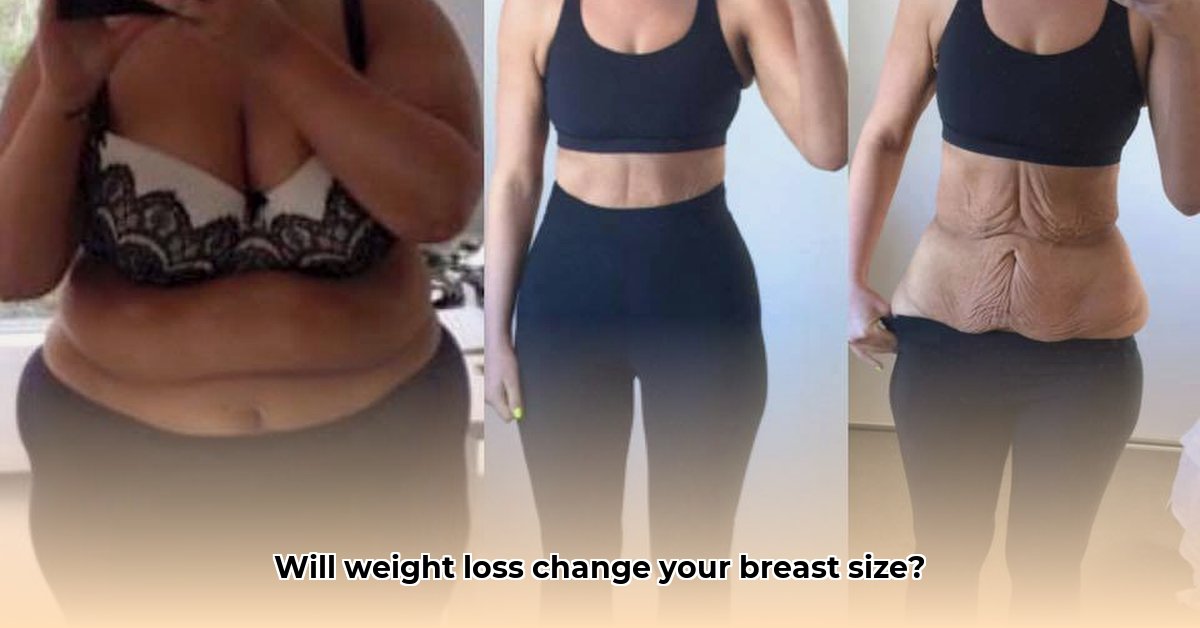
Losing weight is a significant accomplishment, often celebrated for its impact on overall health. However, the journey can bring unexpected changes, particularly concerning breast size and shape. This comprehensive guide will explore the science behind these alterations, offer practical advice for managing them, and outline options for addressing concerns post-weight loss.
Understanding Breast Composition & Weight Loss
Breasts are composed primarily of fatty tissue, glandular tissue (responsible for milk production), and connective tissue. Weight loss primarily targets fat deposits; therefore, a reduction in breast size is a common outcome. Think of it like deflating a balloon – the fabric (connective tissue) remains, but the overall volume decreases. The extent of size reduction is highly variable and depends on several factors. Did you know that the distribution of fat within the breast also influences the visible changes after weight loss?
Individual Factors & Variation
The experience of breast change during weight loss is remarkably individual. Several key factors influence the outcome:
- Age: Younger skin tends to have better elasticity, recovering more readily from weight fluctuations.
- Genetics: Genetic predisposition significantly influences skin elasticity and overall tissue structure. Some individuals naturally have more resilient skin.
- Initial Breast Size: Women with larger breasts may experience more noticeable changes in size and shape.
- Rate of Weight Loss: Rapid weight loss can overstretch the skin, increasing the risk of sagging. Gradual weight loss is generally better tolerated.
- Breast Density: Women with denser breast tissue may experience less dramatic size changes compared to those with more fatty tissue.
This inherent variability underscores the need for realistic expectations and personalized strategies.
Managing Breast Changes During Weight Loss
Proactive management can significantly influence the effects of weight loss on breast health. Here's a practical guide:
Gradual Weight Loss: Aim for a gradual weight loss rate of 1-2 pounds per week. This minimizes skin stretching and promotes better adaptation.
Optimal Nutrition & Hydration: A balanced diet rich in protein, healthy fats, and antioxidants supports skin elasticity and overall tissue health. Adequate hydration is crucial for maintaining skin plumpness. "Staying well-hydrated is key to maintaining skin elasticity," notes Dr. Sarah Miller, Dermatologist, Mayo Clinic.
Targeted Exercise: Incorporate strength training, focusing on chest exercises like push-ups, dumbbell presses, and planks. This helps maintain muscle tone and provides better breast support. "Chest exercises can improve muscle definition and support breast tissue," confirms Dr. David Lee, Exercise Physiologist, Cleveland Clinic.
Supportive Bras: Invest in well-fitting, supportive bras throughout your weight loss journey. Proper support minimizes sagging and improves comfort.
Topical Treatments (with caution): Some topical creams claim to improve skin elasticity. However, evidence supporting their effectiveness is limited. Consult your doctor before using them.
Post-Weight Loss Options
After reaching your weight loss goal, you may still have concerns about your breast appearance. Several options exist:
Non-Surgical Options: Continue with the strategies mentioned above. A well-fitting bra continues to be crucial. Targeted chest exercises and maintaining hydration can also help.
Surgical Options: Breast lifts (mastopexy) or augmentation may be considered. These are surgical procedures with associated risks, recovery periods, and costs. A thorough consultation with a qualified plastic surgeon is essential to discuss suitability and potential outcomes. Dr. Anya Petrova, Plastic Surgeon, University Hospital, advises, "Surgical options should be carefully considered after exploring non-surgical approaches, with realistic expectations about outcomes."
Maintaining Long-Term Breast Health
Maintaining long-term breast health requires a holistic approach:
- Healthy Lifestyle: Continue a balanced diet and regular exercise regimen.
- Supportive Bras: Wear well-fitting, supportive bras for optimal comfort and support.
- Self-Exams: Regular breast self-exams are essential for early detection of potential abnormalities.
- Regular Check-ups: Schedule annual check-ups with your doctor for comprehensive assessments.
Remember, your weight loss journey is personal. By combining a healthy lifestyle with informed choices, you can navigate this process with confidence and maintain your well-being. The key is to focus on overall health and self-acceptance.